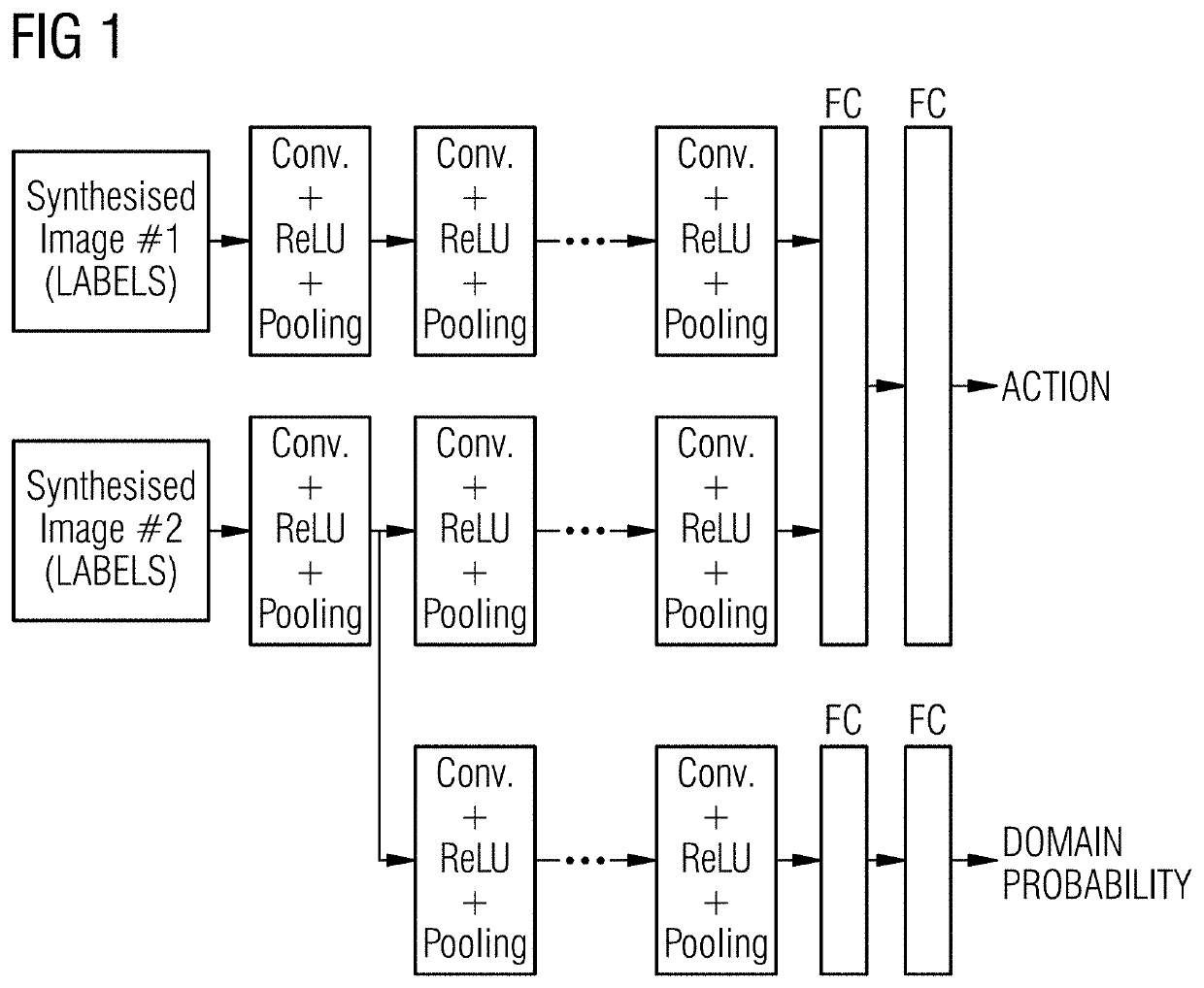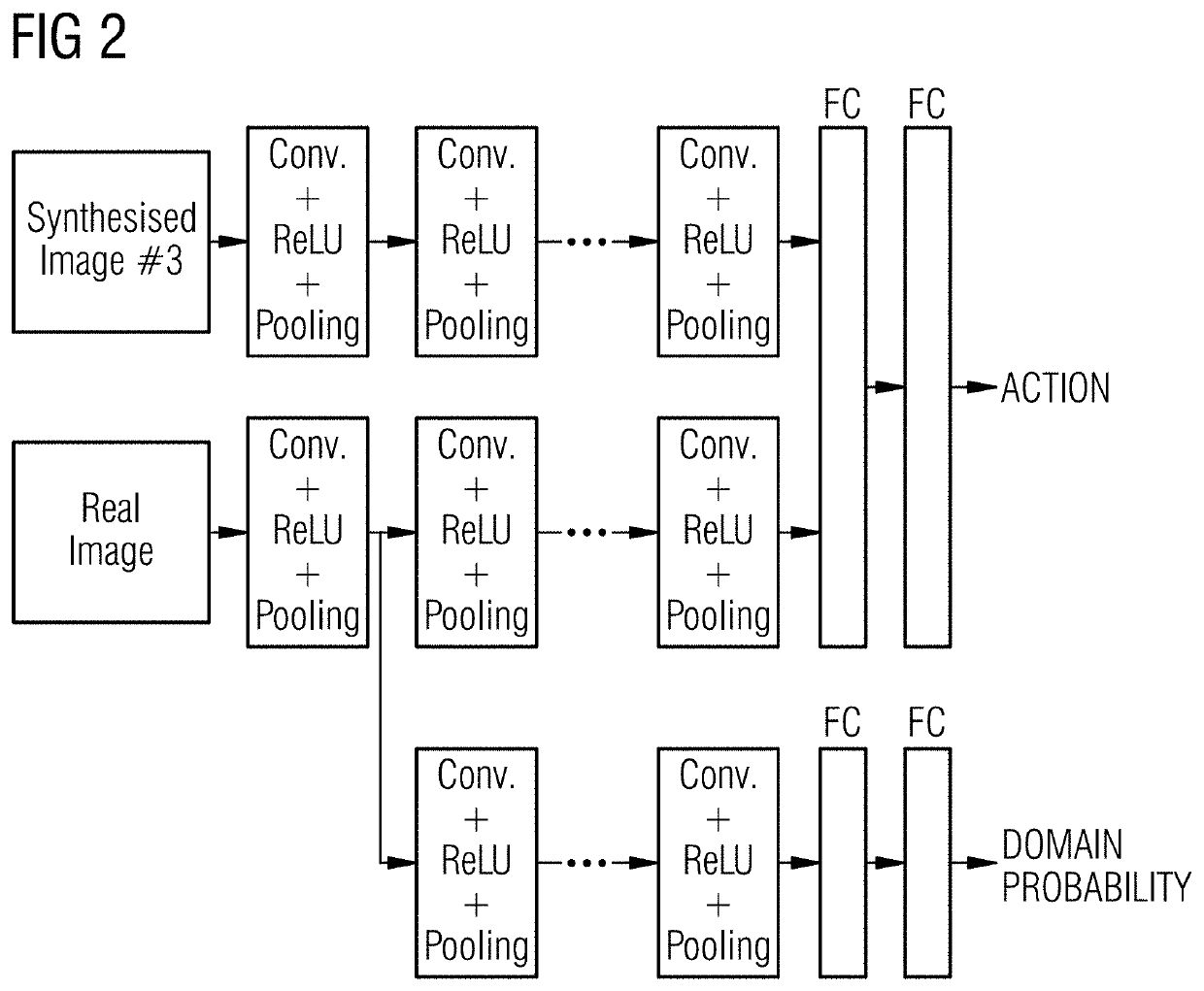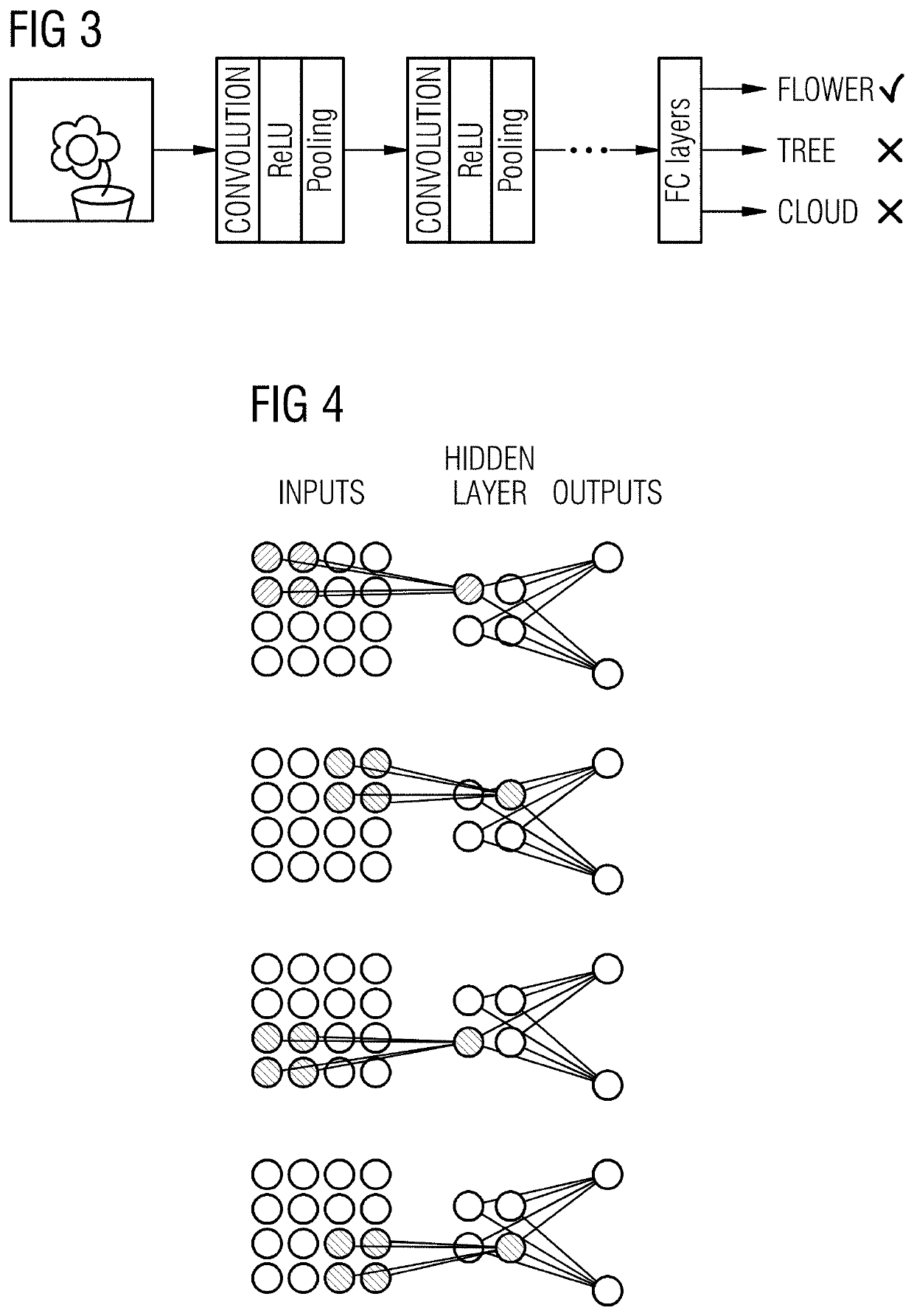Method, learning apparatus, and medical imaging apparatus for registration of images
a learning apparatus and image registration technology, applied in the field of learning apparatus and medical imaging apparatus for image registration, can solve the problems of difficult registration between images acquired using different imaging modes/apparatus, soft tissue structures that are observable in magnetic resonance images may not be visible (or not easily observable), and the ability of domain classifier to reduce the ability
- Summary
- Abstract
- Description
- Claims
- Application Information
AI Technical Summary
Benefits of technology
Problems solved by technology
Method used
Image
Examples
Embodiment Construction
[0063]FIG. 3 schematically illustrates a convolutional neural network (CNN) as a machine learning algorithm used for deep learning. This CNN is specifically arranged for image data as input. CNNs differ from other types of neural networks in that the neurons in a network layer of a CNN are connected to sub-regions of the network layers before that layer instead of being fully-connected as in other types of neural network. The neurons in question are unresponsive to the areas outside of these sub-regions in the image.
[0064]These sub-regions might overlap, hence the neurons of a CNN produce spatially-correlated outcomes, whereas in other types of neural networks, the neurons do not share any connections and produce independent outcomes. In a neural network with fully-connected neurons, the number of parameters (weights) may increase quickly as the size of the input image increases.
[0065]A convolutional neural network reduces the number of parameters by reducing the number of connectio...
PUM
 Login to View More
Login to View More Abstract
Description
Claims
Application Information
 Login to View More
Login to View More - R&D
- Intellectual Property
- Life Sciences
- Materials
- Tech Scout
- Unparalleled Data Quality
- Higher Quality Content
- 60% Fewer Hallucinations
Browse by: Latest US Patents, China's latest patents, Technical Efficacy Thesaurus, Application Domain, Technology Topic, Popular Technical Reports.
© 2025 PatSnap. All rights reserved.Legal|Privacy policy|Modern Slavery Act Transparency Statement|Sitemap|About US| Contact US: help@patsnap.com



